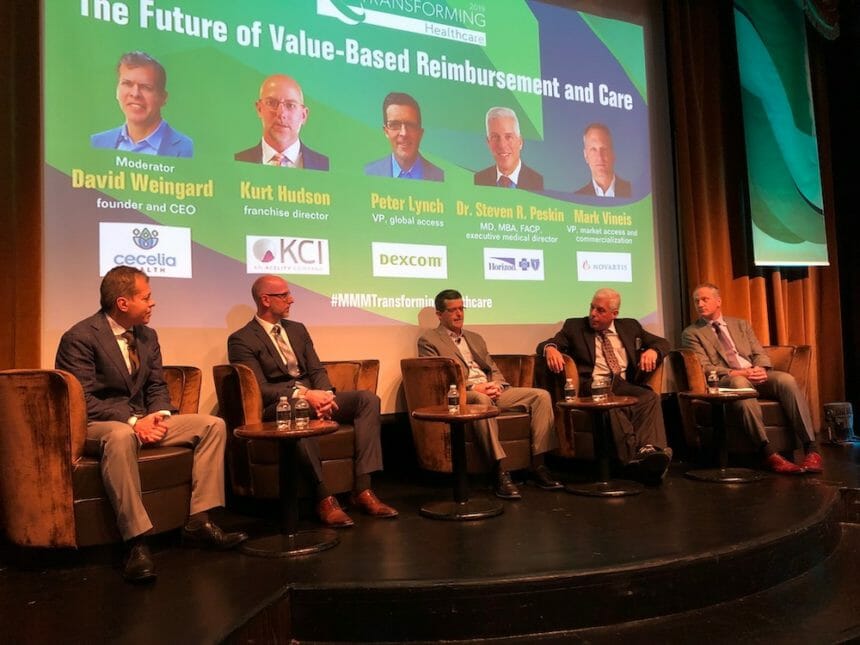Panelists from every facet of the healthcare system discussed the future of value-based reimbursement and care at the MM&M Transforming Healthcare conference on Thursday.
Mark Vineis, VP, market access and commercialization, Novartis
Everybody in the system has to demonstrate value. Demonstrating value and getting the price from the value perspective, it’s not a nice-to-have, it’s a have-to-have. As the conversations have become more and more shrill at the political and national level, the ultimate best practice would be absolute visibility to patient-level data and outcomes, and at some point, the technology will get us there.
Dr. Steven Peskin, executive medical director, population health, Horizon Blue Cross Blue Shield of New Jersey
Government and private sector, the two primary payers, are knitting together. Working with innovators on that public-private sector aggregate is on my wish list. That is happening to some extent, but there is still a large disconnect that highlights the even deeper disconnect in the healthcare system. Drug companies don’t trust insurers, insurers don’t trust providers and patients don’t trust anyone.
Kurt Hudson, franchise director, Acelity’s Surgical and Sports Medicine Business
A best practice for us is moving away from randomized controlled trials and moving to producing real-world data. Running a three-year or five-year trial isn’t going to move the needle from the adoption perspective. The evidence-based and outcomes-based healthcare environment is changing so rapidly that those kinds of long-range studies are not going to be impactful for our business.
Peter Lynch, VP, global access, Dexcom
Three incentives I see are price and access in two different ways, coverage or volume. From a pricing standpoint, the situation we’re interested in value-based arrangements is when the valued-based price is unclear. In terms of coverage, we’re interested in avenues that payers can use to access these patients and be more proactive in getting them on the value-based arrangements.







